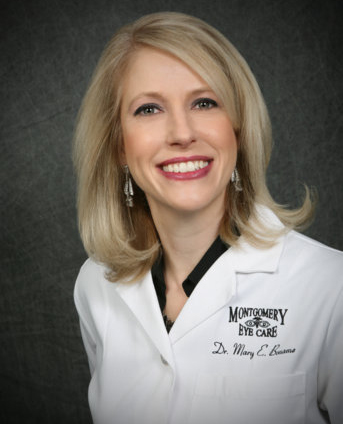By Mary E. Boname, OD, MS, FAAO

Jan. 6, 2016
SYNOPSIS
Build relationships with local MDs to facilitate an easy consult process. Done right, you will retain your patients long-term and gain new patients, too.
ACTION POINTS
PRIORITIZE NEEDED MD STRENGTHS. Impressive professional training, chair-side/bedside manner, communication ability and proximity to office should top list. Willingness to share care is essential. BE RELIABLE PARTNER TO MD. Communicate, concisely and promptly, with MDs, giving them the information and follow-up they need to care for the patient. FOLLOW-UP WITH PATIENT. Ask patient how the visit went from their perspective, and whether all of their concerns were addressed.
The relationships you are able to build with the MDs in your community can mean the difference between patients co-managed by you, or co-managed by one of your competitors. I’ve learned to make the most of my opportunities to make connections with the MDs who practice near where my office is based in New Jersey. The need for greater cooperation between health care providers as the Affordable Care Act reforms get enacted means all of us will be co-managing more with our MD colleagues. In addition to providing the kind of cooperative care that each patient is going to come to expect–if they don’t expect it already–co-management can add profitability to your practice, and bring in new patients in the form of consults from the MD. In cases where I am providing services that the MD is not, and they are reinforcing the need for optometric care, as well as ophthalmological care, co-management is profitable. An example of a profit-generating co-management relationship would be a contact lens-wearing patient with meibomian gland disease who also is a glaucoma suspect that I sent out for baseline OCT. I don’t have enough glaucoma patients to justify the purchase of an OCT, so I decide, on a case-by-case basis, what I am professionally comfortable with in light of the particular patient’s ocular and systemic health and the breadth and scope of my professional experience. Following the OCT, I was able to make a diagnosis and then keep the patient in my practice for long-term care. But more than profitability, the most important reason to co-manage is to provide better, more comprehensive care for my patients.
Related ROB Articles
Present Premium IOLs to Patients with Cataracts
Co-Management: Three Common Scenarios to Legally Protect Your Practice
Diabetic Co-Management: Capture a Growing Opportunity
Related ROB Videos
Your Practice Mission Statement: 3 ODs Say Live It & Breathe It
Build a Preventative Care Practice
Embracing the Medical Model: Three Videos with Randolph Brooks, OD, FAAO
Recognize When to Send for Consult
If I am seeing a patient who has a systemic history with a risk of ocular complications, and I have very few patients with that same profile, I may elect to send the patient to one of my colleagues in ophthalmology to confirm my examination findings and weigh in on the proper examination and follow-up frequency for that patient. Patients who need to have testing on equipment I haven’t purchased yet (like an OCT), or patients who have had retinal surgery for macular holes, retinal tears, or other surgeries, also are sent to an ophthalmologist for a consult.
Seize Opportunities Among Your Patient Base to Connect
I have about six local MDs that I co-manage patients with. Many of them are patients of mine. I have at least 30-35 patients who are physicians at RWJUH, Princeton Plainsboro Hospital, Mt. Sinai Medical Center, UPenn Medical Center and other local institutions. They have been a terrific resource for obtaining expert advice in dermatology, rheumatology, ophthalmology, psychiatry and other specialties.
Consult vs. Referral
The term “referral” often is used incorrectly. When you say it, you may mean that you’re sending the patient to another doctor, who will then send the patient back to you, but, actually that’s not what that term means. A consultation is a rendering of advice or professional opinion, followed by a report of findings to the referring physician. A referral, on the other hand, is a request for another doctor to assume total care of a patient. Click HERE to read more about the difference between these two terms. —ROB Editors
Prioritize Needed Strengths of Doctors You Refer To
Think about what is important to you in the doctors you refer to. In my case, the top requirements are: professional training, personality/chair-side manner, easy and secure ability to communicate with me through encrypted e-mail or text (this is actually required by HIPAA) and proximity to my office.
Professional Training:
I want to know not just that the doctors are board certified in their specialties, but I want to know the number of cases they have done in the area that I am referring a patient to them for. I would want to know how many cataract or LASIK procedures they have done, and the outcome of the majority of these cases. Most surgeons have this information, or should have this information, readily available when your staff calls to ask for it. I also want to know if the doctor has had any ancillary training, beyond their basic training, that makes them even more qualified than their peers.
Personality/Chair-Side Manner:
I want to make sure the doctors are kindred spirits to me in the way they practice. I take a small-town doctoring approach to how I relate to my patients. I don’t just examine them and offer a prescription or diagnosis. I like to take the time to get to know each patient, including their lifestyle and individual needs. I want to make sure I’m sending a patient, who is accustomed to my style of doctoring, to another doctor with a similar outlook.
Easy & Secure Ability to Communicate:
It is essential that the electronic health records the doctor uses, and the systems in place in the doctor’s office, make it easy for the doctor to both send and receive messages from me. I need to know that my patients’ HIPAA-protected information is secure when I send the doctor’s office notes from a previous visit, or other guidance about the patient. It’s also important that, in addition to having the ability to easily and securely communicate, that the doctor is disciplined about following through and doing so in a timely manner.
Proximity to My Office:
If a patient has to travel more than, say, a half-hour out of their way to follow through on your recommendation for a consult, there’s a good chance they won’t. I try to send patients for consults only with doctors located within a short drive from my office, and I let patients know that it won’t be hard for them to get there.
Give the MDs What They Need, Too
Just as you have your list of must-haves, so too, do the doctors you refer to. You need to be able to communicate about patients in a clear, concise manner, to be able to decide together with the MD who is providing which services (if the MD is an ophthalmologist), and you have to be able to communicate to the patient exactly what they are being referred for.
Clear, Concise Communication:
You should come up with your own template, if one doesn’t already exist in your EHR, for sending notes to a doctor about a patient. You want to be thorough, including concerns and symptoms the patient expressed to you, but you also don’t want to be too long-winded, since, like you, the doctor is probably managing many patients at one time.
Agree Who Does What.
Co-managing a patient is no time for an ECP turf war. If co-managing with an ophthalmologist, establish the services you provide, such as pre- and post-operative care, and the services the surgeon provides, including the particular visits before and after the surgery that the surgeon should take care of, along with the actual surgery, and what will take place should there be any post-operative complications. They need to know that you will promptly send the patient back to them for care if a complication occurs.
Explain Consult Relationship to Patient.
You should be able to explain to all of the patients you send for consults exactly why they are being temporarily sent out. In the case of a cataract or LASIK surgery, the explanation is simple: As an optometrist, you can provide a wide range of medical eyecare services, but you do not perform surgery. In the case of a condition such as a retinal tear, the explanation to a patient may be more nuanced. You need to explain that while you diagnosed the problem, the patient needs further care that you are not able to perform to repair the tear. You should let the ophthalmologist know that you explained the division of care to the patient, and have an understanding with the ophthalmologist that they will reinforce what you said, and explain to the patient why they will be sent back to your office for care following the OMD’s consultation or treatment. The jury is still out on the impact healthcare reform is having on ODs co-managing with MDs. But I suspect that patients may be less likely to have a consultation if it means a greater out-of-pocket expense to them. That is why it is crucial to explain in detail why I am advising a consultation. What needs to be done and why? What is the impact to my patient? Educate Your Staff About Consult Process Staff members need to know which doctors I send patients to for consults for which conditions, and they should offer to call the MD’s office to arrange a consultation appointment. It is best not to rely on the patient to do it themselves. There is usually a key person on the MD’s staff that is the go-to person to make appointments.
Follow-Up with Patients After MD Visit
Often, patients whom I have sent for a consultation will drop by to let me know in person how everything went. If they need to have a few minutes of my time to review things, we schedule that time. I ask them directly how things went, and if all of their concerns were addressed.
Mary E. Boname, OD, MS, FAAO, is the owner of Montgomery Eye Care, P.A., in Skillman, NJ. To contact her: mboname@mecnj.com.



























